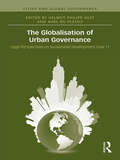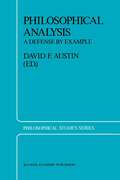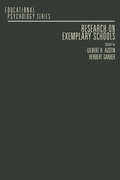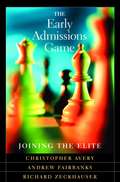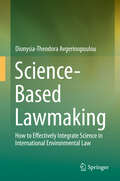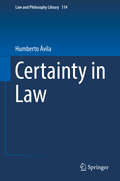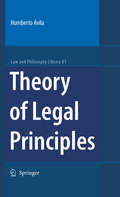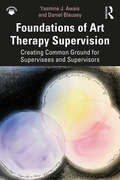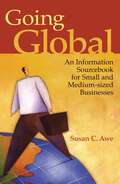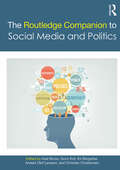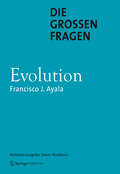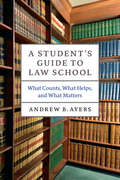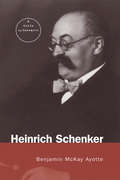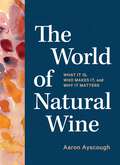- Table View
- List View
The Globalisation of Urban Governance (Cities and Global Governance)
by Helmut Philipp Aust Anél Du PlessisThe adoption of the Sustainable Development Goals (SDGs) by the UN General Assembly in 2015 represents the latest attempt by the international community to live up to the challenges of a planet that is out of control. Sustainable Development Goal 11 envisages inclusive, safe, resilient and sustainable cities around the world by the year 2030. This globally agreed vision is part of a trend in international policy toward good urban governance, and now awaits implementation. Fourteen original contributions collectively examine how this global vision has been developed on a conceptual level, how it plays out in various areas of (global) urban governance and how it is implemented in varying local contexts. The overarching hypothesis presented herein is that SDG 11 proves that local governance is recognised as an autonomous yet interrelated part of the global pursuit of sustainable development. The volume analyses three core questions: How have the normative ideals set forth in SDG 11 been developed? What are the meanings of the four sub-goals of SDG 11 and how do these relate to each other? What does SDG 11 imply for urban law and governance in the domestic context and how are local processes of urban governance internationalised? The Globalisation of Urban Governance makes an important scholarly contribution by linking the narrative on globalisation of good urban governance in various social sciences with legal discourse. It considers global governance and connects the existing debate about cities and their place in global governance with some of the most pertinent questions that lawyers face today.
The Globalisation of Urban Governance: Legal Perspectives On Sustainable Development Goal 11 (Cities and Global Governance)
by Helmut Philipp Aust Du Plessis AnélThe adoption of the Sustainable Development Goals (SDGs) by the UN General Assembly in 2015 represents the latest attempt by the international community to live up to the challenges of a planet that is out of control. Sustainable Development Goal 11 envisages inclusive, safe, resilient and sustainable cities around the world by the year 2030. This globally agreed vision is part of a trend in international policy toward good urban governance, and now awaits implementation. Fourteen original contributions collectively examine how this global vision has been developed on a conceptual level, how it plays out in various areas of (global) urban governance and how it is implemented in varying local contexts. The overarching hypothesis presented herein is that SDG 11 proves that local governance is recognised as an autonomous yet interrelated part of the global pursuit of sustainable development. The volume analyses three core questions: How have the normative ideals set forth in SDG 11 been developed? What are the meanings of the four sub-goals of SDG 11 and how do these relate to each other? What does SDG 11 imply for urban law and governance in the domestic context and how are local processes of urban governance internationalised? The Globalisation of Urban Governance makes an important scholarly contribution by linking the narrative on globalisation of good urban governance in various social sciences with legal discourse. It considers global governance and connects the existing debate about cities and their place in global governance with some of the most pertinent questions that lawyers face today.
Research on Exemplary Schools
by Gilbert R. Austin Herbert GarberResearch on Exemplary Schools covers significant research works on effective school learning, with particular emphasis on identifying and analyzing a student's abilities and characteristics on the assumption that student learning was primarily determined by differences in individual potential and needs. The information provided is derived from the assumption that the characteristics of the school learning environment may explain the extent to which students master the outcomes desired from the school teaching-learning experience.This text is organized into three parts encompassing 10 chapters. Part I reviews the history of the exemplary schools research movements and the research findings, as well as policy implications concerning the relationships between private and public schools education, both Catholic and nonsectarian. Part II describes the methods for identifying exemplary schools, school climate, and the roles of the teacher and the school principal. Part III describes the policy issues emerging from effective schools research. This part also provide some critical thoughts on the movement from the perspective of an educational psychologist whose specialties are educational measurement and instructional design. This book will prove useful to researchers and practitioners who wish to improve the outcomes of all students in their schools.
The Early Admissions Game: Joining The Elite, With A New Chapter
by Christopher. Avery Andrew. Fairbanks Richard J. ZeckhauserEach year, hundreds of thousands of high school seniors compete in a game they'll play only once, whose rules they do not fully understand, yet whose consequences are enormous. The game is college admissions, and applying early to an elite school is one way to win. But the early admissions process is enigmatic and flawed. It can easily lead students toward hasty or misinformed decisions. This book--based on the careful examination of more than 500,000 college applications to fourteen elite colleges, and hundreds of interviews with students, counselors, and admissions officers--provides an extraordinarily thorough analysis of early admissions. In clear language it details the advantages and pitfalls of applying early as it provides a map for students and parents to navigate the process. Unlike college admissions guides, The Early Admissions Game reveals the realities of early applications, how they work and what effects they have. The authors frankly assess early applications. Applying early is not for everyone, but it will improve--sometimes double, even triple--the chances of being admitted to a prestigious college. An early decision program can greatly enhance a college's reputation by skewing statistics, such as selectivity, average SAT scores, or percentage of admitted applicants who matriculate. But these gains come at the expense of distorting applicants' decisions and providing disparate treatment of students who apply early and regular admissions. The system, in short, is unfair, and the authors make recommendations for improvement. The Early Admissions Game is sure to be the definitive work on the subject. It is must reading for admissions officers, guidance counselors, and high school seniors and their parents.Table of Contents: Introduction: Joining the Game 1. The History of Early Admissions 2. The State of the Game 3. Martian Blackjack: What Do Applicants Understand about Early Admissions? 4. The Innocents Abroad: The Admissions Voyage 5. The Truth about Early Applications 6. The Game Revealed: Strategies of Colleges, Counselors, and Applicants 7. Advice to Applicants Conclusion: The Essence of the Game and Some Possible Reforms Appendix A: Median SAT-1 Scores and Early Application Programs at Various Colleges Appendix B: Data Sources Appendix C: Interview Formats Acknowledgments Tables and Figures Index Reviews of this book: Applying to an elite college through an early-admissions program can improve students' chances of getting in by as much as 50 percent over their odds during the regular admissions cycle, a difference that is the equivalent of scoring 100 points higher on the SAT...Based on an analysis of admission data at top colleges, as well as interviews with over 400 college freshmen [The Early Admissions Game] challenges the official line of college admissions deans, who have long held that applying early does not give prospective students an advantage over regular applicants. But the research confirms what many high-school counselors already suspected, and it is likely to fuel debate over whether early-admissions programs favor wealthy and well-connected students and should be eliminated or reformed.--Jeffrey R. Young, Chronicle of Higher EducationReviews of this book: [This] important contribution to the college-admissions process should reduce the general anxiety that pervades today's transition to college and, in particular, help level the playing field for students who lack access to adequate college counseling. The book may also prompt needed reform of contemporary admissions practices...The authors' goal...deserves acclaim for helping inner-city and rural students and those in other understaffed districts to pursue admission on a much more even footing...There is a wealth of information in this well-organized, clearly-written book which will enable students to make better college choices.--William R. Fitzsimmons, Harva
The Fast Way to a Perfect Best Man's Speech: The Fast Way To A Perfect Best Man's Speech (Bullet Guides)
by Matt AveryOpen this book and you will Bring laughter and tears Deliver great jokes Speak with confidence Keep them hooked
The Fast Way to a Perfect Father of the Bride's Speech: Bullet Guides (Bullet Guides)
by Matt AveryOpen this book and you will Speak from the heart Bring laughter and tears Make it memorable Make your daughter proud
The Fast Way to a Perfect Groom's Speech: Bullet Guides (Bullet Guides)
by Matt AveryOpen this book and you will Know what to say Hook your audience Keep it simple Make your bride proud
Science-Based Lawmaking: How to Effectively Integrate Science in International Environmental Law
by Dionysia-Theodora AvgerinopoulouThe Book takes the approach of a critique of the prevailing international environmental law-making processes and their systemic shortcomings. It aims to partly redesign the current international environmental law-making system in order to promote further legislation and more effectively protect the natural environment and public health. Through case studies and doctrinal analyses, an array of initial questions guides the reader through a variety of factors influencing the development of International Environmental Law. After a historical analysis, commencing from the Platonic philosophy up to present, the Book holds that some of the most decisive factors that could create an optimized law-making framework include, among others: progressive voting processes, science-based secondary international environmental legislation, new procedural rules, that enhance the participation in the law-making process by both experts and the public and also review the implementation, compliance and validity of the science-base of the laws. The international community should develop new law-making procedures that include expert opinion. Current scientific uncertainties can be resolved either by policy choices or by referring to the so-called „sound science.“ In formulating a new framework for environmental lawmaking processes, it is essential to re-shape the rules of procedure, so that experts have greater participation in those, in order to improve the quality of International Environmental Law faster than the traditional processes that mainly embrace political priorities generated by the States. Science serves as one of the main tools that will create the next generation of International Environmental Law and help the world transition to a smart, inclusive, sustainable future.
Certainty in Law (Law and Philosophy Library #114)
by Humberto ÁvilaInstead of the usual apologetic treatment found in legal doctrine, linked to the determinacy, immutability or predictability of norms, this book treats legal certainty innovatively, holistically and in depth. Using a method at once analytical and functional, Professor Ávila examines the structural elements of legal certainty, from its definition and foundations to its various dimensions, normative forces and efficacies, citing a wealth of examples from case law to support each of the theses defended.No subject is more important and topical than legal certainty. Problems relating to lack of understanding, instability and unpredictability of law intensify day by day everywhere, in civil law and common law countries alike. Normative sources are increasingly diverse in origin (national, international, community) and multiple in nature (legal, contractual, jurisprudential). They change constantly, and present increasingly frequent problems of ambiguity and vagueness that significantly hinder their comprehension. This state of affairs, which to a greater or lesser extent is true of any legal order, justifies a return to the subject of legal certainty. In this book, essential questions are answered such as: Legal certainty in what sense? Certainty of what, for whom, in whose vision and by whom? When, to what extent, and to what end? “(…) it is probably the most comprehensive and systematic study ever produced on this subject using the analytical method.” (Riccardo Guastini, Professor of Jurisprudence, University of Genoa, Italy)
Theory of Legal Principles (Law and Philosophy Library #81)
by Humberto AvilaThis book examines the distinction between principles and rules so that they can be better understood and applied. It structures the distinction between principles and rules on different foundations than those jurisprudence ordinarily employs. It also proposes a new model to explain the normative species, which includes structured weighing on the application process while encompassing substantive criteria of justice in its argument.
Foundations of Art Therapy Supervision: Creating Common Ground for Supervisees and Supervisors
by Yasmine J. Awais Daniel BlauseyFoundations of Art Therapy Supervision serves as a reference guide for art therapists who have found themselves in supervisor roles without prior training and supervisees hoping to learn what to expect from the supervision relationship, and illustrates how to receive and provide clinical art therapy supervision. Written by two art therapists with over 35 years of collective supervision experience, this new resource includes a framework for providing effective supervision in the classroom and in the field, case studies and art-based supervisory exercises, and guidance for new professionals seeking certification or licensure. Chapters weave the authors’ supervision experience with a significant literature review, and feature explanations on how professional identities (art therapist, psychotherapist, counselor, supervisor, supervisee, administrator, educator, etc.) and personal identities (gender, race, sexuality, etc.) influence the supervisory and therapeutic relationships. This book will teach supervisees how to make the most of their experience while simultaneously providing a comprehensive reference for practicing supervisors.
Foundations of Art Therapy Supervision: Creating Common Ground for Supervisees and Supervisors
by Yasmine J. Awais Daniel BlauseyFoundations of Art Therapy Supervision serves as a reference guide for art therapists who have found themselves in supervisor roles without prior training and supervisees hoping to learn what to expect from the supervision relationship, and illustrates how to receive and provide clinical art therapy supervision. Written by two art therapists with over 35 years of collective supervision experience, this new resource includes a framework for providing effective supervision in the classroom and in the field, case studies and art-based supervisory exercises, and guidance for new professionals seeking certification or licensure. Chapters weave the authors’ supervision experience with a significant literature review, and feature explanations on how professional identities (art therapist, psychotherapist, counselor, supervisor, supervisee, administrator, educator, etc.) and personal identities (gender, race, sexuality, etc.) influence the supervisory and therapeutic relationships. This book will teach supervisees how to make the most of their experience while simultaneously providing a comprehensive reference for practicing supervisors.
Going Global: An Information Sourcebook for Small and Medium-Sized Businesses
by Susan C. AweThis title helps small and medium-sized enterprises discover the advantages and disadvantages of international business and plan their entry or expansion strategies.In an age where globalizing a business has gone from an innovation to an imperative, how can entrepreneurs make sure their small- and medium-sized enterprises (SMEs) are set up for maximum worldwide reach from the very beginning? Going Global: An Informational Sourcebook for Small and Medium-Sized Businesses is an extraordinary resource that points the way to a wealth of available print and web resources for helping SME owners research their international sales potential.Going Global offers separate chapters on such critical topics as how to do a business plan, how to analyze the competition and the market, how to find foreign customers, how to set up an international business, how to manage a global business, and how to use the Internet to its fullest. No matter what stage of entering international trade a company is in, its owners, managers, and stakeholders will be able to quickly and easily find the information and expertise they need to compete in a world-based economy.
The Routledge Companion to Social Media and Politics (Routledge Media and Cultural Studies Companions)
by Axel Bruns, Gunn Enli, Eli Skogerbø, Anders Olof Larsson and Christian ChristensenSocial media are now widely used for political protests, campaigns, and communication in developed and developing nations, but available research has not yet paid sufficient attention to experiences beyond the US and UK. This collection tackles this imbalance head-on, compiling cutting-edge research across six continents to provide a comprehensive, global, up-to-date review of recent political uses of social media. Drawing together empirical analyses of the use of social media by political movements and in national and regional elections and referenda, The Routledge Companion to Social Media and Politics presents studies ranging from Anonymous and the Arab Spring to the Greek Aganaktismenoi, and from South Korean presidential elections to the Scottish independence referendum. The book is framed by a selection of keystone theoretical contributions, evaluating and updating existing frameworks for the social media age.
Die großen Fragen - Evolution
by Francisco J AyalaDie großen Fragen behandeln grundlegende Probleme und Konzepte in Wissenschaft und Philosophie, die Forscher und Denker seit jeher umtreiben. Anspruch der ambitionierten Reihe ist es, die Antworten auf diese Fragen zu präsentieren und damit die wichtigsten Gedanken der Menschheit in einzigartigen Übersichten zu bündeln. Im vorliegenden Band Evolution widmet sich Francisco Ayala 20 bedeutenden Fragen zu Ursprung und Entwicklung des Lebens auf der Erde, zur Vielfalt der Organismen und zur Stellung des Menschen.
A Student's Guide to Law School: What Counts, What Helps, and What Matters (Chicago Guides to Academic Life)
by Andrew B. AyersLaw school can be a joyous, soul-transforming challenge that leads to a rewarding career. It can also be an exhausting, self-limiting trap. It all depends on making smart decisions. When every advantage counts, A Student’s Guide to Law School is like having a personal mentor available at every turn. As a recent graduate and an appellate lawyer, Andrew Ayers knows how high the stakes are—he’s been there, and not only did he survive the experience, he graduated first in his class. In A Student’s Guide to Law School he shares invaluable insight on what it takes to make a successful law school journey. Originating in notes Ayers jotted down while commuting to his first clerkship with then-Judge Sonia Sotomayor, and refined throughout his first years as a lawyer, A Student’s Guide to Law School offers a unique balance of insider’s knowledge and professional advice. Organized in four parts, the first part looks at tests and grades, explaining what’s expected and exploring the seven choices students must make on exam day. The second part discusses the skills needed to be a successful law student, giving the reader easy-to-use tools to analyze legal materials and construct clear arguments. The third part contains advice on how to use studying, class work, and note-taking to find your best path. Finally, Ayers closes with a look beyond the classroom, showing students how the choices they make in law school will affect their career—and even determine the kind of lawyer they become. The first law school guide written by a recent top-ranked graduate, A Student’s Guide to Law School is relentlessly practical and thoroughly relevant to the law school experience of today’s students. With the tools and advice Ayers shares here, students can make the most of their investment in law school, and turn their valuable learning experiences into a meaningful career.
A Student's Guide to Law School: What Counts, What Helps, and What Matters (Chicago Guides to Academic Life)
by Andrew B. AyersLaw school can be a joyous, soul-transforming challenge that leads to a rewarding career. It can also be an exhausting, self-limiting trap. It all depends on making smart decisions. When every advantage counts, A Student’s Guide to Law School is like having a personal mentor available at every turn. As a recent graduate and an appellate lawyer, Andrew Ayers knows how high the stakes are—he’s been there, and not only did he survive the experience, he graduated first in his class. In A Student’s Guide to Law School he shares invaluable insight on what it takes to make a successful law school journey. Originating in notes Ayers jotted down while commuting to his first clerkship with then-Judge Sonia Sotomayor, and refined throughout his first years as a lawyer, A Student’s Guide to Law School offers a unique balance of insider’s knowledge and professional advice. Organized in four parts, the first part looks at tests and grades, explaining what’s expected and exploring the seven choices students must make on exam day. The second part discusses the skills needed to be a successful law student, giving the reader easy-to-use tools to analyze legal materials and construct clear arguments. The third part contains advice on how to use studying, class work, and note-taking to find your best path. Finally, Ayers closes with a look beyond the classroom, showing students how the choices they make in law school will affect their career—and even determine the kind of lawyer they become. The first law school guide written by a recent top-ranked graduate, A Student’s Guide to Law School is relentlessly practical and thoroughly relevant to the law school experience of today’s students. With the tools and advice Ayers shares here, students can make the most of their investment in law school, and turn their valuable learning experiences into a meaningful career.
A Student's Guide to Law School: What Counts, What Helps, and What Matters (Chicago Guides to Academic Life)
by Andrew B. AyersLaw school can be a joyous, soul-transforming challenge that leads to a rewarding career. It can also be an exhausting, self-limiting trap. It all depends on making smart decisions. When every advantage counts, A Student’s Guide to Law School is like having a personal mentor available at every turn. As a recent graduate and an appellate lawyer, Andrew Ayers knows how high the stakes are—he’s been there, and not only did he survive the experience, he graduated first in his class. In A Student’s Guide to Law School he shares invaluable insight on what it takes to make a successful law school journey. Originating in notes Ayers jotted down while commuting to his first clerkship with then-Judge Sonia Sotomayor, and refined throughout his first years as a lawyer, A Student’s Guide to Law School offers a unique balance of insider’s knowledge and professional advice. Organized in four parts, the first part looks at tests and grades, explaining what’s expected and exploring the seven choices students must make on exam day. The second part discusses the skills needed to be a successful law student, giving the reader easy-to-use tools to analyze legal materials and construct clear arguments. The third part contains advice on how to use studying, class work, and note-taking to find your best path. Finally, Ayers closes with a look beyond the classroom, showing students how the choices they make in law school will affect their career—and even determine the kind of lawyer they become. The first law school guide written by a recent top-ranked graduate, A Student’s Guide to Law School is relentlessly practical and thoroughly relevant to the law school experience of today’s students. With the tools and advice Ayers shares here, students can make the most of their investment in law school, and turn their valuable learning experiences into a meaningful career.
A Student's Guide to Law School: What Counts, What Helps, and What Matters (Chicago Guides to Academic Life)
by Andrew B. AyersLaw school can be a joyous, soul-transforming challenge that leads to a rewarding career. It can also be an exhausting, self-limiting trap. It all depends on making smart decisions. When every advantage counts, A Student’s Guide to Law School is like having a personal mentor available at every turn. As a recent graduate and an appellate lawyer, Andrew Ayers knows how high the stakes are—he’s been there, and not only did he survive the experience, he graduated first in his class. In A Student’s Guide to Law School he shares invaluable insight on what it takes to make a successful law school journey. Originating in notes Ayers jotted down while commuting to his first clerkship with then-Judge Sonia Sotomayor, and refined throughout his first years as a lawyer, A Student’s Guide to Law School offers a unique balance of insider’s knowledge and professional advice. Organized in four parts, the first part looks at tests and grades, explaining what’s expected and exploring the seven choices students must make on exam day. The second part discusses the skills needed to be a successful law student, giving the reader easy-to-use tools to analyze legal materials and construct clear arguments. The third part contains advice on how to use studying, class work, and note-taking to find your best path. Finally, Ayers closes with a look beyond the classroom, showing students how the choices they make in law school will affect their career—and even determine the kind of lawyer they become. The first law school guide written by a recent top-ranked graduate, A Student’s Guide to Law School is relentlessly practical and thoroughly relevant to the law school experience of today’s students. With the tools and advice Ayers shares here, students can make the most of their investment in law school, and turn their valuable learning experiences into a meaningful career.
A Student's Guide to Law School: What Counts, What Helps, and What Matters (Chicago Guides to Academic Life)
by Andrew B. AyersLaw school can be a joyous, soul-transforming challenge that leads to a rewarding career. It can also be an exhausting, self-limiting trap. It all depends on making smart decisions. When every advantage counts, A Student’s Guide to Law School is like having a personal mentor available at every turn. As a recent graduate and an appellate lawyer, Andrew Ayers knows how high the stakes are—he’s been there, and not only did he survive the experience, he graduated first in his class. In A Student’s Guide to Law School he shares invaluable insight on what it takes to make a successful law school journey. Originating in notes Ayers jotted down while commuting to his first clerkship with then-Judge Sonia Sotomayor, and refined throughout his first years as a lawyer, A Student’s Guide to Law School offers a unique balance of insider’s knowledge and professional advice. Organized in four parts, the first part looks at tests and grades, explaining what’s expected and exploring the seven choices students must make on exam day. The second part discusses the skills needed to be a successful law student, giving the reader easy-to-use tools to analyze legal materials and construct clear arguments. The third part contains advice on how to use studying, class work, and note-taking to find your best path. Finally, Ayers closes with a look beyond the classroom, showing students how the choices they make in law school will affect their career—and even determine the kind of lawyer they become. The first law school guide written by a recent top-ranked graduate, A Student’s Guide to Law School is relentlessly practical and thoroughly relevant to the law school experience of today’s students. With the tools and advice Ayers shares here, students can make the most of their investment in law school, and turn their valuable learning experiences into a meaningful career.
A Student's Guide to Law School: What Counts, What Helps, and What Matters (Chicago Guides to Academic Life)
by Andrew B. AyersLaw school can be a joyous, soul-transforming challenge that leads to a rewarding career. It can also be an exhausting, self-limiting trap. It all depends on making smart decisions. When every advantage counts, A Student’s Guide to Law School is like having a personal mentor available at every turn. As a recent graduate and an appellate lawyer, Andrew Ayers knows how high the stakes are—he’s been there, and not only did he survive the experience, he graduated first in his class. In A Student’s Guide to Law School he shares invaluable insight on what it takes to make a successful law school journey. Originating in notes Ayers jotted down while commuting to his first clerkship with then-Judge Sonia Sotomayor, and refined throughout his first years as a lawyer, A Student’s Guide to Law School offers a unique balance of insider’s knowledge and professional advice. Organized in four parts, the first part looks at tests and grades, explaining what’s expected and exploring the seven choices students must make on exam day. The second part discusses the skills needed to be a successful law student, giving the reader easy-to-use tools to analyze legal materials and construct clear arguments. The third part contains advice on how to use studying, class work, and note-taking to find your best path. Finally, Ayers closes with a look beyond the classroom, showing students how the choices they make in law school will affect their career—and even determine the kind of lawyer they become. The first law school guide written by a recent top-ranked graduate, A Student’s Guide to Law School is relentlessly practical and thoroughly relevant to the law school experience of today’s students. With the tools and advice Ayers shares here, students can make the most of their investment in law school, and turn their valuable learning experiences into a meaningful career.
Heinrich Schenker: A Research and Information Guide
by Benjamin AyotteThis book consists of over 1,500 citations to both primary sources and the burgeoning secondary literature of Heinrich Schenker, annotated and subdivided by category. The citations are supplemented with indices cross-referencing entries according to individual works and analytical topic.
Heinrich Schenker: A Research and Information Guide
by Benjamin AyotteThis book consists of over 1,500 citations to both primary sources and the burgeoning secondary literature of Heinrich Schenker, annotated and subdivided by category. The citations are supplemented with indices cross-referencing entries according to individual works and analytical topic.
The World of Natural Wine: What It Is, Who Makes It, and Why It Matters
by Aaron AyscoughThe most comprehensive and definitive guide to the world of natural wine that every wine lover needs. * Named one of the year&’s best books on wine by The New York Times and Bloomberg Natural wine has nothing to hide. Made from grapes alone—organically farmed, then harvested, fermented, aged, and bottled without additives—it&’s wine that seeks to express, in every sip, its traditional and crucial link to nature. The World of Natural Wine is the book wine lovers need to navigate this movement—because it&’s about so much more than labels and vintages. Meet the obsessive, often outspoken, winemakers; learn about the regions of France where natural wine culture first appeared and continues to flourish today; and explore natural wine in Spain, Italy, Georgia, and beyond. And just as important: find out what must be &“unlearned&” to discover the eye-opening pleasures of drinking naturally.
